Suggestions for Existing Sensors

Accelerometer
- observe the behavior of a liquid on a cart
- monitor physical activity during a day
- track the movement of a football through the air
- explore seismic activity
- study your movement on a swing
- investigate free fall on a roller coaster
- study Newton’s second law using a cart
- measure changes in acceleration while stopping and starting in a car
- observe changes in acceleration while jumping
- study the motion of toy cars on various race tracks
[ back to top ]
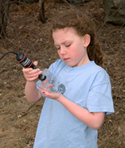
Carbon Dioxide
- monitor respiration output of bugs
- determine the effect of temperature on solubility of gas in soda pop
- observe respiration of sugars by yeast
- detect level of carbon dioxide in your breath
- study the effect of temperature on respiration
- monitor cell respiration of germinating seeds
- determine the metabolic rate of enzymes
- compare amount of carbon dioxide exhaled before and after exercise
- study the effect of temperature on crickets
- monitor carbon dioxide intake of plants in a closed terrarium
[ back to top ]
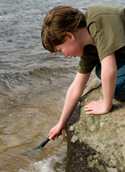
Conductivity
- rank the conductivity of salt solutions
- discover the amount of diffusion through membranes
- determine the amount of salts in your local watershed studies
- map mixing zones in estuaries
- study properties of electrolytic and non-electrolytic solutions
- determine the effect of concentration on conductivity of solutions
- find the end point of a reaction between an acid and base
- test salt content of soups and other edible solutions
- test salinization of soils from different locations and levels
- observe the freezing points of varying salt solutions
[ back to top ]
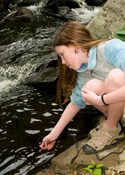
Dissolved Oxygen
- determine the amount of dissolved oxygen in an aquarium
- monitor amount of dissolved oxygen in your local watershed
- study aerobic respiration of yeast
- measure biochemical oxygen demand (BOD)
- study the interdependence of aquatic plants and animals
- study the photosynthetic cycle in a local pond throughout a day or season
- study how temperature influences amount of dissolved oxygen
- measure the respiration rate of different aquatic organisms
- study how riffles and glides influence amount of dissolved oxygen in local streams
- study the effect of dissolved oxygen on an ecosystem when pollutants are added
[ back to top ]
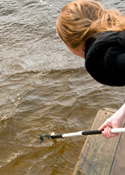
Flow Rate Sensor
- determine the rate of flow of a stream
- map the change in rate of flow in a lake at various depths
- study fluid dynamics surrounding a dam
- explore how flow rate affects water quality
- track changes in flow rate when tributaries combine
- monitor flow rate changes during seasons
- measure flow rate of water in an estuary
- determine changes in flow rate around industrial facilities or power plants pipes
- study changes in flow rate around storm water drains
- investigate how human activities impact water flow rate
[ back to top ]
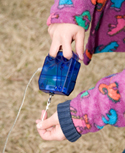
Force
- design your own weight scale
- study impulse and momentum during a collision
- add force vectors
- determine coefficients of friction
- study buoyancy
- measure applied forces on a breaking bridge
- study first class levers
- demonstrate Newton’s Second and Third Laws
- study the motion of a pendulum
- determine the mechanical advantage of a pulley
[ back to top ]
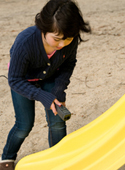
Infrared Thermometer
- demonstrate equilibrium of temperature in a room
- study greenhouse effect inside of cars and car trunks
- monitor urban heat effect
- determine best materials for children’s playground equipment
- study why it is best to wear a hat during the winter
- explore the results of planting grass on roof tops
- perform a school or house energy audit
- determine the best type of insulation needed for cooling and heating of a room
- study the evaporation of various liquids
- design an energy efficient building model
[ back to top ]

Light
- investigate the relationship between light and distance (inverse square law)
- explore the absorption of light by different substances
- monitor light during different seasons
- study intensity of different indoor light sources
- compare light reflected from different surfaces
- investigate the polarization of scattered light
- determine the angle of incidence
- study interference and diffraction patterns
- investigate solar and atmospheric variables with solar photometry
- study the absorption of light by different materials
[ back to top ]

Magnetic Detector
- investigate field strength of permanent magnets
- determine the Earth’s magnetic field
- study magnetic fields around a current-carrying wire
- study the relationship between number of wraps to magnetic field strength of an electromagnet
- map magnetic fields around a magnet
- measure magnetic field at the opening of a solenoid
- study the forces between paired magnets
- rank the strength of magnets from different materials
- mapping magnetic strength over distance
- measure low frequency electromagnetic radiation near high power wires
[ back to top ]

Motion Sensor
- observe simple harmonic motion
- study the kinematics on a ramp
- find the acceleration due to gravity
- investigate displacement of objects including humans
- discover the rebound height of a bouncing ball
- study free fall
- display velocity of moving objects
- study periodic motion
- determine your hang time
- find terminal speed of a balloon
[ back to top ]
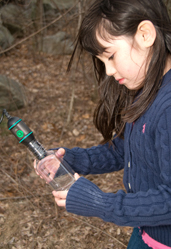
Oxygen Gas
- monitor the respiration rate of a bug in a jar
- determine changes in oxygen gas as a result of plants in a closed system
- investigate the effect of humidity on oxygen gas in the air
- study the rusting of iron in the presence of varying amounts of oxygen
- measure the loss of oxygen during human respiration
- explore changes in oxygen levels in confined spaces within your school
- study various forms of ventilation
- determine the effect of temperature on the respiration of cold-blooded critters
- explore respiration of plants
- measure the effect of temperature on cellular respiration
[ back to top ]
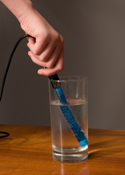
pH
- determine the endpoint of an acid-base titration
- monitor photosynthetic rate of an aquarium
- create your own pH scale using household items
- monitor acid rain in your area
- test for acid levels in your local watershed
- determine the dissociation constant for an acid
- study the buffering of streams and lakes
- relate light to pH in an aquatic ecosystem
- measure the effect of acids and bases on organic substances
- determine the concentration of phosphoric acid in colas
[ back to top ]
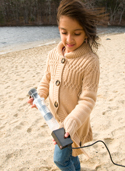
Pressure
- study the relationship between pressure and volume of gases
- find the vapor pressure of liquids
- study the relationship between pressure and temperature of gases
- determine pressure differences at varying altitude
- measure transpiration rate of plants under different conditions
- study cellular respiration in peas
- monitor pressure changes during sugar fermentation in yeast
- determine effect of temperature on cold-blooded organisms in sealed containers
- study weather patterns using barometric pressure
- measure pressure differentiation between the inside and outside your house
[ back to top ]

Respiration
- compare human respiration patterns while exercising and at rest
- determine your human lung capacity
- observe effects of hyperventilation and hypoventilation on humans
- observe the effects of re-breathing air on respiratory rate
- calculate your respiration rate before and after exercise
- compare respiration during anaerobic and aerobic exercise
- study respiration patterns during sleep
- investigate respiration rate at different altitudes or environmental conditions (humidity and temperature)
- observe the effect of constricted airways (breathing through a small straw) on breathing and respiration rate
- analyze your muscular efficiency while bicycling
[ back to top ]
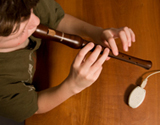
Sound
- find the frequency and pitch of different types of musical instruments
- measure the speed of sound in air and other gases
- determine the relationship between speed of sound and temperature
- find the speed of sound in solids
- study your ability to whistle at different octaves
- measure the intensity of sounds under different environmental conditions and locations
- determine the length of time that you can vocalize a sound at a specific level
- investigate typical voice patterns
- detect sounds to identify bugs, birds, and creatures while they are chewing
- determine shifts in frequency spectrum related to wear and tear of machinery
[ back to top ]
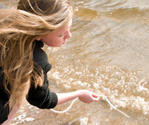
Temperature
- observe the evaporation of various liquids
- study seasonal heating and cooling in ground and air
- study endothermic and exothermic reactions
- observe cooling curves of liquids
- study the insulating properties of materials
- study the thermoregulation of the human body
- observe the effect of temperature on solubility of salts
- find the specific heat of objects
- discover the temperature at which bulbs, peepers, and seeds appear in the spring
- determine energy content of foods
[ back to top ]
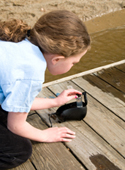
Turbidity
- study effect of industrial pollution
- monitor a stream over time
- explore the water treatment process
- relate turbidity of a pond to seasonal changes
- study urban runoff from roads and parking lots
- investigate organisms that live in sediments on the bottom of lakes
- design methods to reduce turbidity in solutions
- investigate the best terrain suited to stop erosion
- study how photosynthetic rate changes with turbidity
- explore how turbidity of a lake impacts its temperature
[ back to top ]
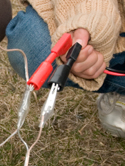
Voltmeter
- observe the charging and discharging of a capacitor
- study Ohm’s Law
- study the decay of batteries during use
- compare voltage drops in series and parallel circuits
- construct electric field maps
- measure resistance of different materials
- investigate the voltage falling on a solar cell throughout a day
- compare the voltage output of a diode at different temperatures
- study the reactivity of different metals in batteries
- measure the voltage of a home-made fruit battery
[ back to top ]
